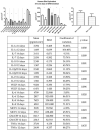Genipin-Crosslinking Effects on Biomatrix Development for Cutaneous Wound Healing: A Concise Review
- PMID: 35677301
- PMCID: PMC9169157
- DOI: 10.3389/fbioe.2022.865014
Genipin-Crosslinking Effects on Biomatrix Development for Cutaneous Wound Healing: A Concise Review
Abstract
Split skin graft (SSG), a standard gold treatment for wound healing, has numerous limitations such as lack of fresh skin to be applied, tedious process, severe scarring, and keloid formation followed by higher risks of infection. Thus, there is a gap in producing polymeric scaffolds as an alternative for wound care management. Bioscaffold is the main component in tissue engineering technology that provides porous three-dimensional (3D) microarchitecture for cells to survive. Upon skin tissue reconstruction, the 3D-porous structure ensures sufficient nutrients and gaseous diffusion and cell penetration that improves cell proliferation and vascularization for tissue regeneration. Hence, it is highly considered a promising candidate for various skin wound healing applications. To date, natural-based crosslinking agents have been extensively used to tailor the physicochemical and mechanical properties of the skin biomatrix. Genipin (GNP) is preferable to other plant-based crosslinkers due to its biological activities, such as antiinflammatory and antioxidant, which are key players to boost skin wound healing. In addition, it has shown a noncytotoxic effect and is biocompatible with human skin cells. This review validated the effects of GNP in biomatrix fabrication for skin wound healing from the last 7 years of established research articles and stipulated the biomaterial development-scale point of view. Lastly, the possible role of GNP in the skin wound healing cascade is also discussed. Through the literature output, it can be concluded that GNP has the capability to increase the stability of biomatrix and maintain the skin cells viability, which will contribute in accelerating wound healing.
Keywords: antioxidants; biomatrix; crosslinking; genipin; skin tissue engineering; wound healing.
Copyright © 2022 Utami Nike, Md Fadilah, Sallehuddin, Nor Azlan, Imran, Maarof and Fauzi.
Conflict of interest statement
The authors declare that the research was conducted in the absence of any commercial or financial relationships that could be construed as a potential conflict of interest.
Figures









References
-
- Arif M. M. A., Yunus M. H. M., Fauzi M. B. (2019). Genipin-crosslinked Gelatin Scaffold in Tissue Engineering: a Systematic Review. Med. Health 14, 1–16. 10.17576/MH.2019.1402.01 - DOI
Publication types
LinkOut - more resources
Full Text Sources
Miscellaneous

